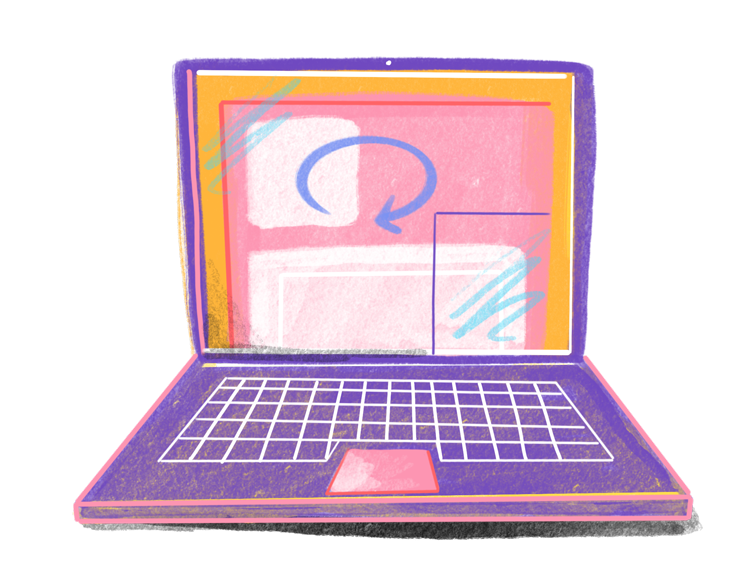This resource offers suggestions and materials for communicating with patients and clinicians about open notes. The goal is to help increase awareness and use of open notes.


This resource offers suggestions and materials for communicating with patients and clinicians about open notes. The goal is to help increase awareness and use of open notes.
Yes. We encourage hospitals, health systems, and individual clinics to use the OpenNotes logo in your communication and outreach materials. It can help patients find their notes more easily and demonstrates your commitment to partnering with patients in their care. The logo can be used free of charge and is available in purple and white. Logo proportions must be retained.
Send us a message to request use of our logo. Please include the name of your organization and how you intend to use the logo.
Non-health systems must go through a simple vetting process. Send us a message about how and why you would like to use the OpenNotes logo.
When a note is shared with a patient it becomes an “open note.”
OpenNotes is a global movement. We encourage and study open and transparent communication in health care. We work with patients, families, doctors, nurses, social workers, and other clinicians. We are part of the Beth Israel Deaconess Medical Center, which is a Harvard Medical School teaching hospital. Our work is not-for-profit, and we are supported by grants and donations.
Here is boilerplate language you might consider using when communicating with patients about open notes:
After a medical visit, doctors, nurses, and other health care providers write notes that summarize important information about you. These notes become a part of your medical record. When a note is shared with you, it becomes an “open note.”
The most common way to access your notes is through the secure online patient portal that is hosted by your health care provider. Using this secure and free portal, you can, among other things, request appointments, message your health care team, and view your health record, including the notes. If your doctor or nurse does not use a web portal, you can request a digital or paper copy of these records for free. If you are not registered on the portal, contact your provider’s office to find out how to create a portal account.
Learn more about open notes at https://howtouse.opennotes.org.
Even though open notes have been federally mandated since 2021, some clinicians are still getting used to this level of transparency. Here are some resources to help you understand the impact of open notes and help you make sharing notes a successful experience for your clinicians:
OpenNotes Providers clinician interview video
OpenNotes: Evidence Is In patient interview video
Tips for Writing Patient-Friendly Notes (University Hospitals)
Even though access to open notes is a federal mandate, many patients do not realize that clinicians write notes. Patients benefit from messaging about notes and the patient portal. It is best to communicate through multiple avenues, including posters, handouts, social media, advertisements, email, text messaging, and person-to-person communication by members of the health care team.
If your health system has an active Patient and Family Advisory Council (PFAC), we recommend involving it in developing your materials and outreach strategies. Here are some examples to get you started:
Web Message to Patients (Yale Health)
Facebook video (Atrium Health, formerly Carolinas HealthCare)
Learn “How to advocate for open notes through Patient and Family Advisory Councils” through the How to Use Open Notes online resource.
Navigating patient portals remains a challenge. We have learned that patients often give up before finding what they need. Health systems that make it easy for patients to access notes, and remind them when a new note is available, find that more patients use open notes to their full advantage.
Here are some particularly effective examples of how health systems are helping their patients to find notes.
Quicklink on Portal (UCHealth)
Portal Reminder (Mayo Clinic)
New Note is Available (Kaiser Permanente)
Portal Landing Page (Intermountain Health)
New Note is Available (BIDMC)
How do I find my notes? (Yale Health)
All content on the OpenNotes website is provided under a Creative Commons 4.0 license. You are invited to use this information with proper attribution.
You are free to:
Under the following terms:
Guidelines for attribution:
Please follow the following format when attributing content from OpenNotes:
For example, if you are creating a handout and quoting content from the Reading Your Notes: FAQs for Patients page, the attribution would read:
This handout features content from “Sharing Notes with Patients: The Basics” by OpenNotes, available under a Creative Commons Attribution 4.0 International license.
![]() Except where otherwise noted, the content by OpenNotes is licensed under a Creative Commons Attribution 4.0 International License.
Except where otherwise noted, the content by OpenNotes is licensed under a Creative Commons Attribution 4.0 International License.
NEW WEBINAR
Getting It Write: What To Do Now That Patients in England Can Read Their GP Notes
Tuesday, November 1, 2022 | 8am Pacific Standard Time (PST)
11am Eastern Standard Time (EST) / 3pm Greenwich Mean Time (GMT)
While open notes have been the “law of the land” in the United States for more than a year, in England, adult patients accessing care through the National Health Service (NHS) will have access to their primary care record online for the first time starting Nov. 1, 2022.
In this webinar, we’ll be joined by open notes experts and discuss what this change means for patients and general practitioner (GP) staff in England.


